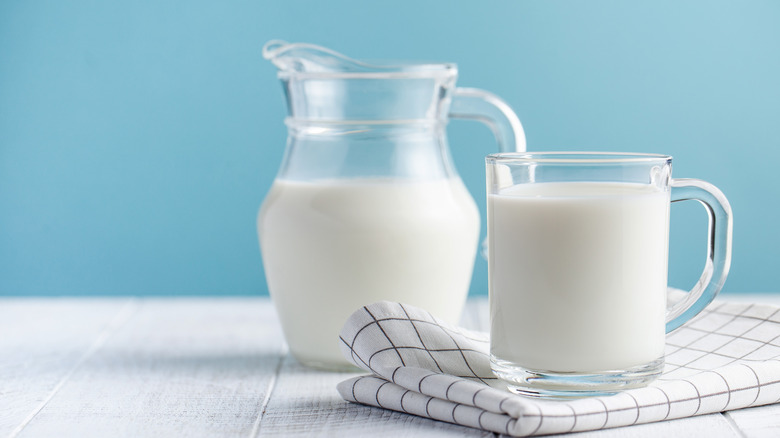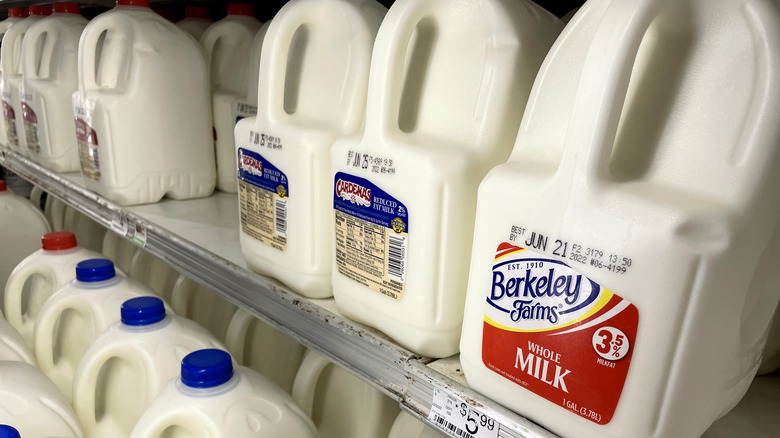Milk Percentages Probably Don't Mean What You Think
Every single packaged food item sold in the U.S. is a product that's subject to regulations set down by the USDA. And this government agency requires that every product, including milk, be labeled with (among other things) its fat content in order to give consumers a clear understanding of what they're buying. This labeling requirement has been in place for many years, and this helps to ensure that consumers are getting exactly what they expect.
Be that as it may, it can be confusing for consumers what the percentages on milk jugs and cartons actually represent. Many dairy brands will even have different colors on their caps and labels to go with their various percentages — often light blue for skim, dark blue for reduced fat, and red for whole milk. The numbers you see range anywhere from 0-3.5%, so what are they referring to? And shouldn't whole milk be 100%?
The percentage is actually the amount of milk fat
According to U.S. Dairy, the percentage listed on a jug of milk refers to the percentage of milk fat that is present in the milk. This is why you'll often see labels such as "2% milk," "1% milk," and "0% or skim milk." The higher the percentage, the more milk fat there is in the milk. It's also worth noting that whole milk is generally 3.5% milk fat.
So why do we care about the percentage of milk fat in our milk? Well, milk fat is an important part of its overall nutrition (via Healthline). Milk contains important nutrients such as vitamin D, as well as calcium, phosphorus, and other minerals. Milk fat also contributes to the flavor and texture of milk, making whole milk richer and creamier than low-fat or skim milk.
However, the amount of milk fat in a glass of milk also affects its calorie, fat, and carbohydrate content. Whole milk contains more of each than low-fat or skim milk because of its higher fat content. If you're watching your calorie intake, you may choose to opt for a lower-fat milk. On the other hand, if you're looking to add some extra calories to your diet, you may choose whole milk.
So next time you pick up a jug of milk, take a closer look at that percentage and see what it can tell you about the milk you're about to drink.

